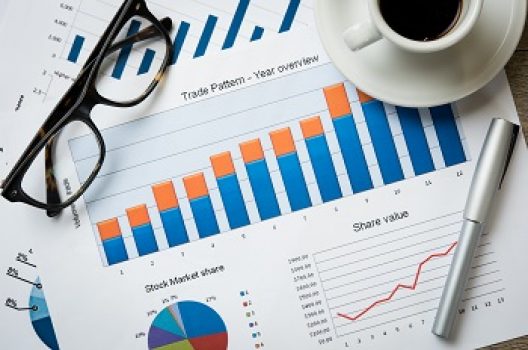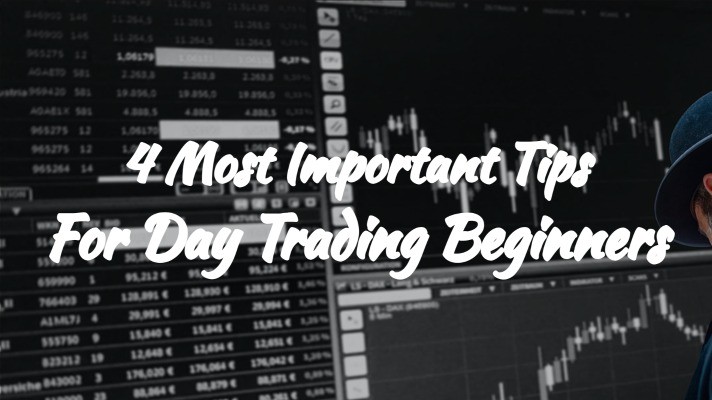Among the most valuable tools that investors and traders have at their disposal is leveraging to increase returns. You can take advantage of small price movements to make your portfolio more stable or have greater exposure. You can also use leverage to stretch your available capital and invest in more assets. In this article, we examine the mechanics of leverage trading and give the exact answer: How does Leverage Trading work?
What is Leverage in Trading?
So, what exactly does the term “leverage” mean? Leverage is the ratio between a margin amount and the trade size, which the margin trader can adjust. Explaining margin and leverage, plus the correlation between them, can be challenging to grasp at times. It is critical to understand that the capital employed to set up trade is the margin requirement.
Example of Leverage

When a position has a 10:1 leverage ratio, the margin required to start and retain the stance is 1/10th the sale size. As a result, a trader will need £1,000 to enter a trade worth £10,000. The value of the margin required to open a position is expressed as a percentage of the total price of the exchange, and it is expressed in dollars. If you’re trading a financial asset that has a leverage of 10:1 and your total account value is £10,000, you have enough money to make a trade of £100,000. In this scenario, the margin requirement for the trade would be £1,000.
In trading, leverage can be a tempting facet because of the chance to make enormous profits. But just like in the real world, there’s always the risk that something might go wrong. This double-edged sword means that one loss could have disastrous consequences for your portfolio.
When trading on margin, traders must have in mind the inherent risks. Because of excessive leverage, most traders view their margin completely wiped out in a very short time. When practicing margin trading, new traders should exercise extreme caution. It is preferable to be more conservative and to employ less leverage. A lower level of leverage implies that the traders are less prone to losing their entire investment when they make errors in their trades.
How Does Leverage Trading Work?
Example of how leverage works
How Does Leverage Trading Work? All You Need to Know
By using your broker, individuals can trade with leverage. Consider it the same as obtaining a loan to buy an item of property. They have their initial capital, and the broker provides the majority of the funds necessary to complete the buying of the spot in its entire value range. It is reflected in the trader’s account balance if there is a relationship between the value they paid for the asset when they purchased it (the opening price) and the amount they received when they sold it.
As a result of the high level of leverage used, the stock’s value may have increased significantly, and the money due to the broker will be deducted from your revenues on that particular transaction. Nevertheless, if the exchange does not go as planned and you end up losing, the money owed is removed from the balance remaining in your account.
As a result, leverage trading infrastructures are not easily accessible to every merchant on the market. To determine the amount of financing that a broker is willing to provide, They must consider several factors. There are several factors to consider, including;
- What level of leverage does the trader require
- The current laws and regulations governing online trading
Benefits of Using Leverage
Investing carries many risks, but that doesn’t mean you can’t take advantage of it. You’ll want to make sure you understand how leveraged trading works before using it as a trade, though. Here are a few benefits:
- Profits increased. You only need to put down a percentage of the worth of your exchange to make the same amount of money as you would in traditional trade. The fact that profits are determined based on the actual value of one’s position means that margins can increase your yields on successful trades and your damages on failed trades.
- Possibilities for gearing. Leverage can open up an investment that traders can use to make other investments, such as real estate. Gearing relates to boosting the amount of money available for investment.
- Market shorting. To protect yourself from the markets, you can use leveraged products to speculate on both a rising or falling market. That means you can profit from any movement of the market, as long as it’s in your favor. The forex market is open for business 24 hours a day, seven days a week.
Drawbacks of Using Leverage
Although forex trading and any leveraged products offer a variety of advantages to entrepreneurs, it is also vital to evaluate the potential pitfalls of using these products. Below are a few essential points to keep in mind:
- Losses get magnified. Margins can either make or break you. They are the difference between profit and loss, so it’s important to remember that your initial outlay is comparatively smaller against conventional trades when you trade with Forex. That makes it easy to forget that you are placing a lot of capital at risk. To minimize your liability, you should continually evaluate your exchange in terms of its combined worth and potential for loss.
- Margin calls. As a result of a change in the market that goes against you, the provider may require additional funds from you to keep one’s trade open. It is called a margin call, and you will be required to either increase your equity or exit stances to cut on your total exposure.
- Funding charges. When you use leverage, you are essentially being loaned the cash to open the entire position at the expense of your initial investment. To keep your spot open overnight, individuals pay a small amount.
Leverage Ratio Formula
Financial leverage is the ratio between a company’s total assets and total equity. Total assets are the combined value of your debt, equity, or loan and capital. The capital or equity in one’s brokerage account is essentially the money you put into the account. The formula is as follows:
Financial Leverage = Total Assets / Equity = (Equity + Debt) / Equity
In some cases, traders can leverage 100:1 and higher with certain brokers- at the very least, in the foreign exchange markets. Traders can leverage their trading spot up to 100x in this case, which is significant.
How Do You Calculate Leverage Ratios?

An option is to start with a margin amount while applying a leverage ratio to ascertain the lot size. This would be the formula; A = E.L– in this case. As a result, the investment size of a merchant’s position is calculated by multiplying its margin amount by its leverage ratio.
Most traders spread their risks all over several different markets, which means they are not investing all of their capital in a single transaction. That is accomplished by establishing some positions in various markets. The need to calculate net asset worth or the accumulated value of a merchant’s positions may arise in such circumstances. Because of the platform technology that most brokerage firms will provide, it is much easier to keep track of all variables and switch individual positions when necessary. Furthermore, it can assist a trader in determining whether or not positions are within the limits of one’s total leverage sums that should be below the maximum leverage permitted by the brokerage company. That’s why it’s important to understand: how does leverage trading work?
Which Assets Can Have Financial Leverage?
It is possible to use leverage trading to trade a variety of financial assets such as stocks, foreign exchange (forex), commodities (futures), options (option contracts), ETFs (exchange-traded funds), indices (stock indexes), and cryptos. When purchasing real estate, financial leverage is also utilized. Your mortgage represents the loans in the financial leverage equation. The equity inside the formula equals the amount of money you put down.
There are maximum leverage restrictions in place for every asset category, which are set per market legislation and the broker’s own promotional efforts to encourage leveraged trading on their system.
Retail Leverage vs Professional Leverage
Certain financial markets are much more unstable than others. Leverage can be restricted to minimal capital multiples. Leverage charges also differ based on whether you are general merchandise or expert trader. Professional clients have better leverage rates than retail ones (about 30:1). Professional customers can get better leverage rates, but they must meet tight standards. Maintaining leverage prices in check for retail customers implies that their capital becomes less prone to be wiped out when a trader loses money.
Leverage Risk Management
Stop losses are a common risk management tool when trading with leverage. Stop-loss orders help you minimize your losses if the market moves against you. If a trader sets a limit that they do not wish to exceed, your share in the instrument is sold at that price. The market can gap and slippage basic stop losses. Regular stop losses follow the same pattern, but shareholders can pay some money to ensure that trades are closed at the actual amount specified. It reduces the risk of losing money if you were using highly leveraged trade.
Conclusion on How Does Leverage Trading Work
Leverage In Trading
How Does Leverage Trading Work? All You Need to Know
Investing in stocks is a crucial part of any investor’s portfolio. Businesses should also leverage their investments by using a margin account. It’s crucial to know how does leverage trading work. Although it’s essential to understand the risks associated with stock trading, many investors choose to use leverage for two reasons: increased returns on investment and lower risk. Like any tool, traders should use leverage with caution, but it can increase overall returns on investment during volatile market periods.







